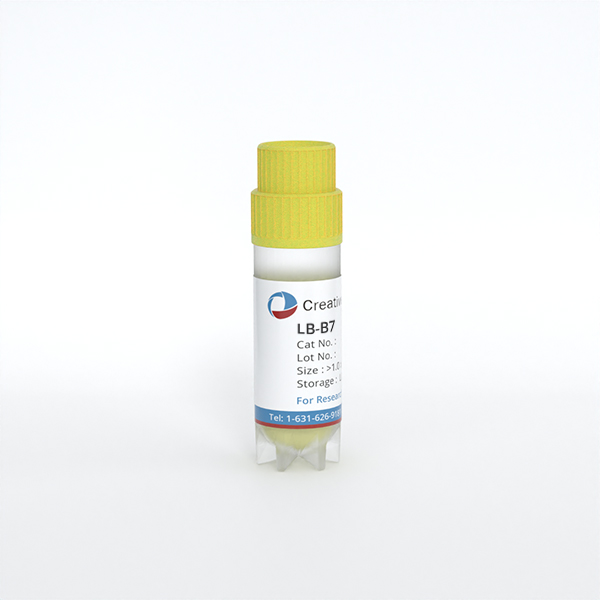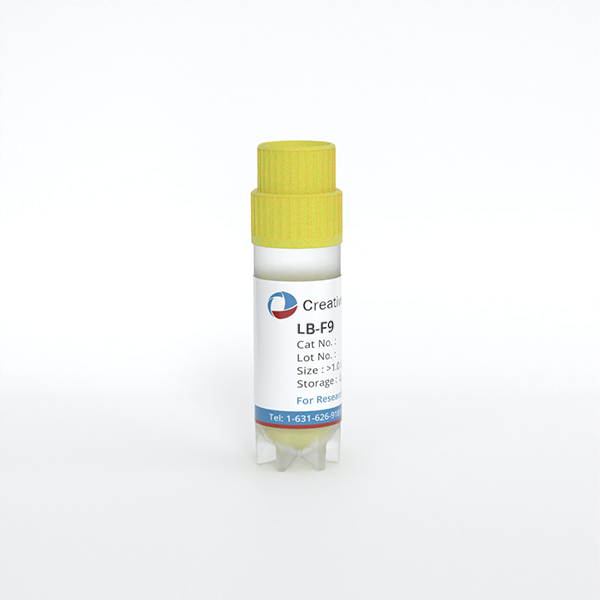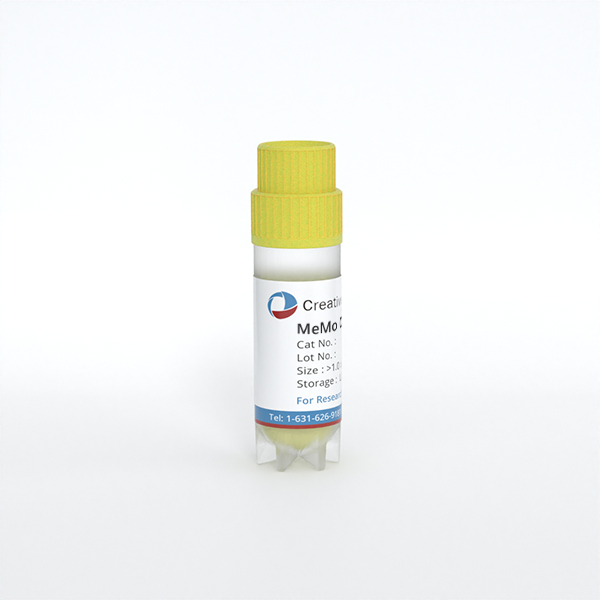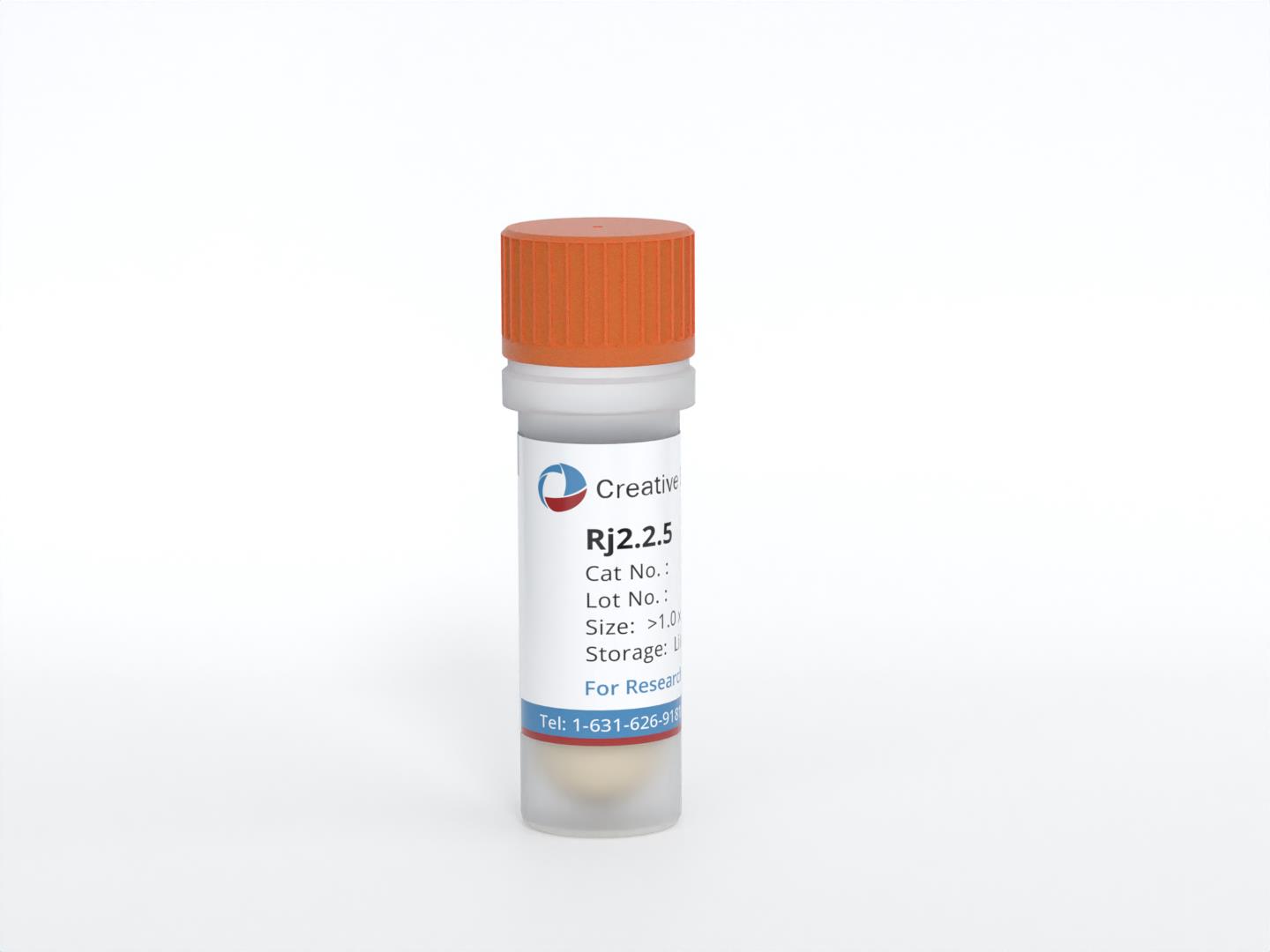Featured Products
Our Promise to You
Guaranteed product quality, expert customer support

ONLINE INQUIRY

EHEB
Cat.No.: CSC-C3439
Species: Human
Source: chronic B cell leukemia
Morphology: lymphoblastoid, round to polygonal, single or clustered cells in suspension
Culture Properties: suspension
- Specification
- Background
- Scientific Data
- Q & A
- Customer Review
- Documents
Immunology: CD3 -, CD10 -, CD13 -, CD19 +, CD20 +, CD34 -, CD37 +, CD38 +, cyCD79a +, CD80 +, HLA-DR +, cyIgG +, cyIgM -, cykappa +, cylambda -
Viruses: ELISA: reverse tr
The EHEB cell line is a widely used cell line that was established from the peripheral blood of a 69-year-old woman with B-cell chronic lymphocytic leukemia (B-CLL) in 1988. However, it is important to note that the EHEB cell line may represent a B-lymphoblastoid cell line rather than a bona fide B-CLL cell line.
Although the EHEB cell line was derived from a patient with B-CLL, it is suggested that the transformation process involving Epstein-Barr virus (EBV) may have led to the generation of a B-lymphoblastoid cell line. EBV is a virus that can immortalize B cells and transform them into continuously growing cell lines, referred to as lymphoblastoid cell lines. As a result of the EBV transformation, the EHEB cell line exhibits characteristics of lymphoblastoid cells, which are more akin to rapidly dividing B-cell blasts rather than the mature and quiescent B cells typically observed in B-CLL. This distinction is important when considering the suitability and relevance of the EHEB cell line for studying the biology and behavior of B-CLL.
Despite its potential deviation from a typical B-CLL cell line, the EHEB cell line has been extensively utilized in research as a model system for studying various aspects of B-cell biology, including cellular signaling pathways, gene expression profiles, and drug response. It has contributed to our understanding of B-cell malignancies and has provided insights into the mechanisms underlying B-CLL development and progression.
Cytokine Production by PBMC Incubated with EHEB Cells
The leukemic microenvironment containing several immune cells, mainly lymphocytes and macrophages capable of producing various molecules including inflammatory cytokines, plays an important role in the development and outcome of the disease. Direct contact of peripheral blood mononuclear cells (PBMC) incubated with Epstein-Barr virus (EBV)-transformed B-CLL cell line (EHEB) cells induced a marked increase of TNFα, IL-1β, IL-6, IFNγ, and IL-10 released by the immune cells.
Incubation of PBMC with an increasing number of EHEB cells caused a dose-dependent stimulation of TNFα release (F = 24.85, p < 0.001). There was no significant difference in TNFα production between PBMC (2 × 106) incubated with 5 × 104 or with 2 × 105 of EHEB cells (Fig. 1). Incubation of PBMC with EHEB cells induced a stimulated IL-6 production (F = 12.27, p = 0.0016). In the presence of the three concentrations of EHEB cells, there was a threefold enhancement in IL-6 production (p < 0.05); however, no significant difference was found at the various concentrations (Fig. 1).
A dosed-dependent stimulation of IL-1β production was observed when PBMC (2 × 106) were incubated for 24 hours with 1.25 × 104 and 2 × 105 EHEB cells (F = 77.7, p < 0.0001). The difference in IL-1β secretion in the presence of the two higher numbers of EHEB cells was not statistically significant (Fig. 2). The production of IFNγ by PBMC incubated with an increasing number of EHEB cells was significantly enhanced (F = 16.9, p = 0.0005) (Fig. 2). The secretion of IL-10 by PBMC was increased upon 24 hours of incubation with EHEB cell at the three concentrations tested (F = 47.6, p < 0.0001) (Fig. 3). There was no significant difference in the amount of IL-1ra produced by PBMC incubated for 24 hours without or with EHEB cells at concentration as indicated above (F = 0.64, p = 0.61) (Fig. 3).
 Fig. 1 TNFα and IL-6 production by PBMC incubated for 24 hours with EHEB cells (cell-to-cell) or supernatants (Sup). (Bessler H, et al., 2020)
Fig. 1 TNFα and IL-6 production by PBMC incubated for 24 hours with EHEB cells (cell-to-cell) or supernatants (Sup). (Bessler H, et al., 2020)
 Fig. 2 IL-1β and IFNγ production by PBMC incubated for 24 hours with EHEB cells (cell-to-cell) or supernatants (Sup). (Bessler H, et al., 2020)
Fig. 2 IL-1β and IFNγ production by PBMC incubated for 24 hours with EHEB cells (cell-to-cell) or supernatants (Sup). (Bessler H, et al., 2020)
 Fig. 3 IL-10 and IL-1ra production by PBMC incubated for 24 hours with EHEB cells (cell-to-cell) or supernatants (Sup). (Bessler H, et al., 2020)
Fig. 3 IL-10 and IL-1ra production by PBMC incubated for 24 hours with EHEB cells (cell-to-cell) or supernatants (Sup). (Bessler H, et al., 2020)
Resistance to CdA of the Human B-cell Leukemia Cell Line EHEB
The effects of 2-chloro-2'-deoxyadenosine (CdA, cladribine), an adenosine deaminase-resistant analog toxic for both proliferating and resting lymphoid cells, were investigated in the human leukemia cell line EHEB, which was derived from a patient with B-CLL. The resistance of the human B-leukemia cell line EHEB to CdA does not result from an impairment of its phosphorylation into CdATP but from a complex series of events encompassing poor inhibition of ribonucleotide reductase and an increase in the proportion of DNA-synthesizing cells in S phase.
Sensitivity to CdA of the B-cell CLL cell line EHEB was evaluated by the MTT reduction assay after 4 days of incubation and compared with that of B-cell CLL lymphocytes freshly isolated from patients (Fig. 4). With an IC50 of approximately 5 μm, EHEB cells appear to be 25-fold less sensitive to CdA than B-cell CLL lymphocytes, for which an IC50 of 0.2 μm was calculated.
To evaluate ribonucleotide reductase activity in situ, the effect of CdA on the conversion of labeled Cyd into deoxynucleotides and its incorporation into DNA was analyzed. As depicted in Fig. 5, sizeable inhibition of the conversion of [3H] Cyd into dCTP and its incorporation into DNA was not observed at concentrations of CdA below 10 μm. An inhibition of ribonucleotide reductase in situ by CdA with an IC50 of less than 0.1 μm in CCRF-CEM cells. Thus, inhibition of ribonucleotide reduction required more than 100-fold higher concentrations of CdA in EHEB cells than in CCRF-CEM cells.
Fig. 6 shows the scattergrams obtained by FACScan analysis of cells incubated for 24 h without (Fig. 6A) or with 10 μm CdA (Fig. 6B). The proportion of cells in the G1 phase was significantly decreased after a 24-h incubation with 10 μm CdA, whereas the proportion of cells synthesizing DNA (in either early or mid-late S phase) was significantly increased. CdA did not increase the rate of DNA synthesis but only increased the number of cells synthesizing DNA.
 Fig. 4 Effect of CdA on viability of EHEB and B-cell CLL cells. (Cardoen S, et al., 2001)
Fig. 4 Effect of CdA on viability of EHEB and B-cell CLL cells. (Cardoen S, et al., 2001)
 Fig. 5 Dose effect of CdA on Cyd conversion into dCTP and its incorporation into DNA. (Cardoen S, et al., 2001)
Fig. 5 Dose effect of CdA on Cyd conversion into dCTP and its incorporation into DNA. (Cardoen S, et al., 2001)
 Fig. 6 Simultaneous analysis of DNA synthesis and DNA content by BrdUrd incorporation, PI staining, and fluorescence-activated cell-sorting analysis. (Cardoen S, et al., 2001)
Fig. 6 Simultaneous analysis of DNA synthesis and DNA content by BrdUrd incorporation, PI staining, and fluorescence-activated cell-sorting analysis. (Cardoen S, et al., 2001)
There are cell viability assays, cell proliferation assays, cytotoxicity assays, cell senescence assays, cell death assays.
EHEB cells may represent a B-lymphoblastoid cell line rather than a bona fide B-CLL cell line, prompting careful consideration of their utility in representing the characteristics of authentic B-CLL cells.
The EBV-transformation of EHEB cells provides a unique avenue for studying the effects of viral transformation on cell behavior and molecular characteristics.
EHEB cells offer a valuable resource for investigating the differences between B-lymphoblastoid cell lines and B-CLL cell lines, as well as understanding the potential impact of viral transformation on cellular characteristics and behavior.
Ask a Question
Average Rating: 5.0 | 3 Scientist has reviewed this product
High purity
The purity of the tumor cell product is another key factor to consider, and Creative Bioarray's products have a high level of cell purity.
23 Jan 2022
Ease of use
After sales services
Value for money
High quality
Creative Bioarray has consistently provided high-quality cell products, and we are pleased with the results of our studies.
01 Feb 2024
Ease of use
After sales services
Value for money
Grateful
Our experience with Creative Bioarray has been positive, and we are grateful for the opportunity to advance our research in this area.
23 Oct 2023
Ease of use
After sales services
Value for money
Write your own review
- You May Also Need







